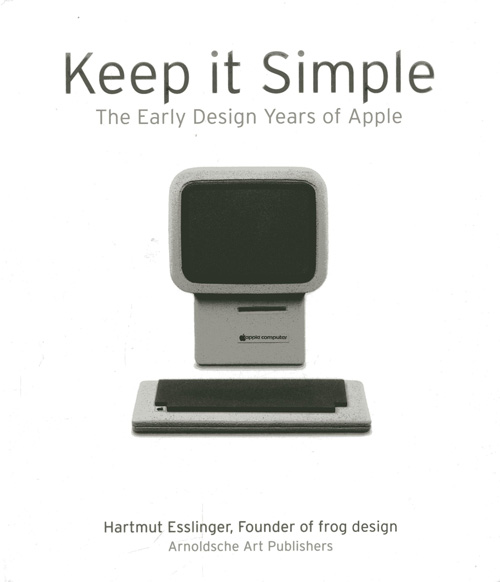Keep it Simple (published in October 2013) is Hartmut Esslinger’s account of the design work he and his company, Frog Design, did for Apple between 1982 and 1985.
I have mixed feelings about this book. On one hand, it is absolutely beautiful. The numerous sketches and stunning photos of Frog’s designs for Apple’s entire product line are a treasure for anybody with an interest in either Apple or industrial design. This includes many models that never made it to market and which I had not seen before. These photos are worth the price of the book alone. Check out this sample PDF file from the publisher for a taste.
Esslinger came up with the so-called Snow White design language, which, starting with the Apple IIc, became a signature of Apple products (in a slightly modified form) for many years. Prototypes developed by Frog during this time clearly anticipate the design direction Apple would later pursue under Jony Ive. It’s fun to imagine how the company would have evolved if some of these designs had made it to market in the late 1980s.
I would have loved to see an even broader set of photos in the book. Esslinger often talks of other products that inspired his work for Apple, such as Sony’s (also a Frog client at the time) and Braun’s product lines. Since these products are not pictured, it is hard to relate to this if you are not already familiar with them.
Esslinger also tells the riveting story of his and Steve Jobs’s struggle to make industrial design a priority at Apple, against the prevailing opinion at the company. Jobs and Esslinger not only had a close working relationship, they were also personal friends, and Esslinger always sided with his friend when an eccentric Jobs became increasingly isolated among Apple’s management. Esslinger is extremely outspoken on this matter, describing Apple executives as mediocre minds
who could simply not cope with Jobs’s brilliance; and CEO John Sculley and the company’s directors showed their weak character and low ethics
when they ultimately ousted Jobs in 1985.
Much of that characterization may actually be true, and Apple’s history is certainly on Esslinger’s side. But the way he tells the story is just a tad too self-congratulatory for my taste — it’s hard to believe that everything he and Jobs did was 100% right and everything the others did was wrong.
Lastly (and I say this as someone whose native language is not English), the book unfortunately suffers from some blatant spelling errors, which really is a shame for an otherwise beautiful product. For example, in one spot Alan Kay’s name is spelled Allan Kay
and Allan Kaye
(!) on the same page! Correct spelling is an important part of design, too.
Still, recommended.
